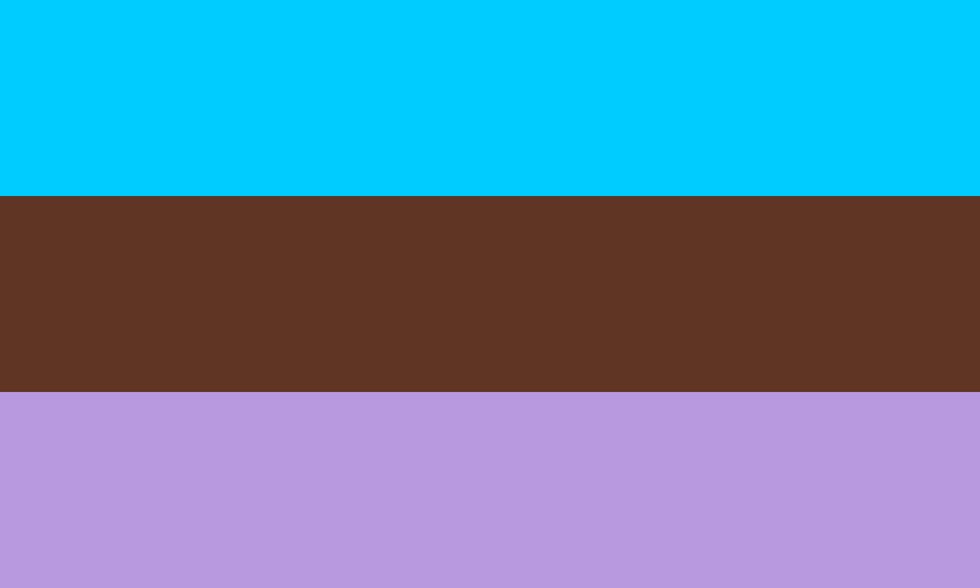MOST OF US have heard terms like “gay,” “straight,” “bisexual,” and “queer” used to describe sexual orientation before. But some people who are attracted to men opt for a different term: “androsexual.”
Some feel that “androsexual” best encapsulates their identity because it lets them express attraction to one gender without identifying within the gender binary themselves. Others identify this way because it lets them express a general attraction to masculine traits in people of multiple genders.
Read on to learn what it means to be androsexual, and how to know if the label might fit you.
More From Men’s Health

What does androsexual mean?
“Androsexual simply means attracted to males, or stereotypically masculine traits or characteristics,” says Luke Allen, a licensed psychologist specializing in LGBTQ+ issues. The word comes from the Latin root “andro,” meaning men or masculinity.
However, being androsexual doesn’t necessarily mean someone is only attracted to men or masculine traits, Allen says. Someone can simultaneously have an additional identity, like gynosexual (attracted to women or feminine traits).
Some people use the term “androsexual” to mean they are attracted to people who identify as men, while others use it to mean they are attracted to masculinity regardless of the gender of the person. Of course, people define masculinity differently, so “androsexual” means different things to different people.
“This may include preference for physical traits such as a deep voice, greater muscle mass, or body hair,” says licensed psychologist and sex therapist Sarah Wright. “Personality traits often considered masculine include confidence, assertiveness, and initiation of sex or romance.”
A similar term some people use is “androphilic,” meaning man-loving, Allen explains. Another related, but different, identity is “phallosexual,” or attracted to those with penises, Wright says. “Most people identify with having a ‘type,’ and this is a potential way to describe an aspect of that,” she says.
Why do people identify as androsexual?
Some people find the term “androsexual” to fit them better than, say, “gay” or “straight,” because they themselves don’t identify exclusively as male or female—so it wouldn’t make sense for them to say they like the “same” or “opposite” gender.
“People who identify as non-binary may be more comfortable identifying their attractions without reference to their own body or identity,” Wright says. “Ideally, someone doesn’t need to out themself to communicate interest in others!” Someone who is transitioning or questioning their gender identity may also use this term so that they don’t have to disclose their gender, Allen adds.
For Raquel Rodriguez, founder of Your Zodiac, the label “androsexual” is more accurate than “straight” because it conveys that she is attracted not just to men, but to traits she considers masculine, such as strength, confidence, a deep voice, and facial hair.
“I’m attracted to masculinity regardless of gender, not just males,” she says. “It’s not just about being into guys specifically; it’s more about being drawn to the energy and characteristics associated with masculinity. So, whether someone identifies as male, female, or anything else, if they have that masculine vibe going on, it can catch my attention.”
Many people, like Rodriguez, like that the term “androsexual” does not have to be about attraction to specific body parts. “It becomes more about role and less about anatomy,” Wright says.
“For me personally, I’m not particularly attracted to masc-presenting cis-men, but am attracted to masc-presenting women and gender-expansive folx,” says sex educator Lilith Fox. “In that context, my attraction pattern could be described as androsexual.”
What does the androsexuality pride flag look like?
Androsexuality actually has its own pride flag. The androsexuality flag has a blue stripe on the top representing “attraction to men and/or masculinity,” a brown stripe in the middle to represent “stability and support,” and a purple stripe on the bottom to include people who possess or are attracted to those with non-binary identities, according to Library.LGBT.
How do I know if I’m androsexual?
“Androsexuality can show up in a lot of ways,” Wright says. She lists, as examples:
♥ Being drawn to partners who are confident and assertive
♥ Being drawn to partners who easily initiate flirting or who clearly communicate their wants in sex or relationship
♥ Preferring the feel of body hair or large muscles
♥ Loving the sound of a deep voice in your ear
♥ Wanting to be with someone who is more “hands on” in life regarding making or fixing things, especially when tools are involved
♥ Being attracted to someone who wears little to no make-up or jewelry
♥ Fantasizing about being rescued or taken care of
An androsexual person’s relationships may look many different ways, Wright adds. They may consist of multiple people who identify as masculine or include more traditional masculine-feminine dynamics.
However, you can define and identify with androsexuality or not as you wish. “It’s a deeply personal realization and can come about at any stage in life and may not necessarily staunchly fit into the pre-described definition,” Fox says. “Use the term if it feels authentic to you (either temporarily or otherwise), ditch it if it doesn’t, or use it as a launchpad to look into other sexually expansive identities.”
Suzannah Weiss is a freelance writer, certified sex educator, and sex/love coach whose work has appeared in The New York Times, The Washington Post, New York Magazine, and more



Comments are closed.